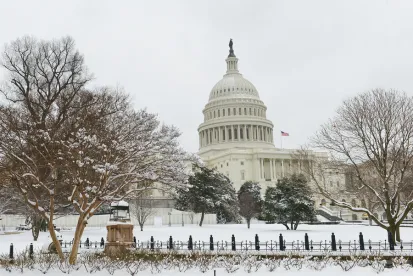On Groundhog Day, Punxsutawney Phil saw his shadow, signaling six more weeks of winter. Given the likely bad weather, these six weeks of “down time” are the perfect opportunity for construction professionals to develop, review, and implement their companies’ emergency response plan.
The United States Department of Labor reports that in 2016, 21.1% of all fatal accidents in the workplace were reported in the construction industry. With the passage of the road bond amendment, and the expected increase in heavy construction in West Virginia in the coming years, workplace incidents are apt to increase. Time is of the essence to put into place – and to test -- an emergency response plan to protect your workforce, as well as your bottom line.
The primary goal of a well-constructed emergency response plan is to provide a detailed roadmap to help a company navigate the immediate aftermath of a crisis occurring when someone is injured or dies on a jobsite. Thereafter, the secondary goal of an emergency response plan is to reduce the interruption of business operations by allowing a construction company to resume operations promptly once the crisis has been resolved.
At a minimum, an emergency response plan should encompass:
Incident assessment - What happened? Does the incident rise to the level of an emergency sufficient to trigger the response plan? If so, how will you document it?
Work stoppage scenarios - How can employees exercise “stop work” authority? How will the company document work stoppages? Have employees received “stop work” authority training? Following an incident involving use of the emergency response plan, who will communicate when work can resume?
Responsibility and authority designation - Who takes charge when an incident occurs? Who has authority to make decisions for the company?
Communication responsibility and delivery protocols - Who will notify authorities and/or government agencies, if required? How will employees or their family members be notified concerning an incident? Should you take pictures following an incident; if so, are there things that should not be photographed? When will the company consider contacting a lawyer for assistance? How, and under what circumstances, will the company communicate with the media, or the public? Are employees permitted to comment regarding incidents, or to make posts about them on social media? Have employees been trained regarding appropriate communications and limitations?
Response checklist – Is there an easily accessible, written list of persons/agencies to call in case of an emergency, including names, phone numbers, and back-up means of communication? Can employees find and quickly use the checklist when needed? Has the company recently tested its response plan and reviewed its checklist to see if changes are needed?
Waiting until you experience an incident is too late to develop an effective emergency response plan. We welcome the opportunity to help you through a crisis, but we hope that careful planning can improve the likelihood that you will be well-prepared when disaster strikes. Let us help you hope for the best, but plan for the worst. If you have not formulated a plan, or if your plan needs review and testing, Steptoe & Johnson is here to help. Contact us for a free assessment of your emergency response planning needs.
Remember, there are six more weeks of winter....





 />i
/>i
